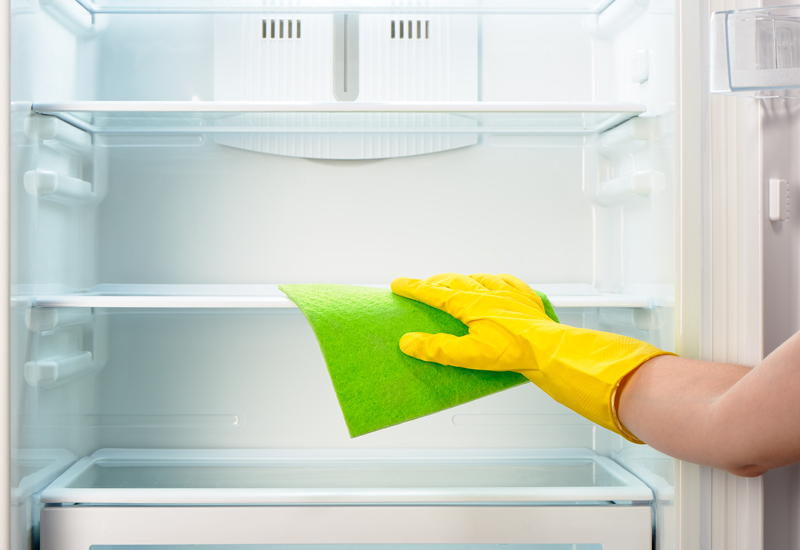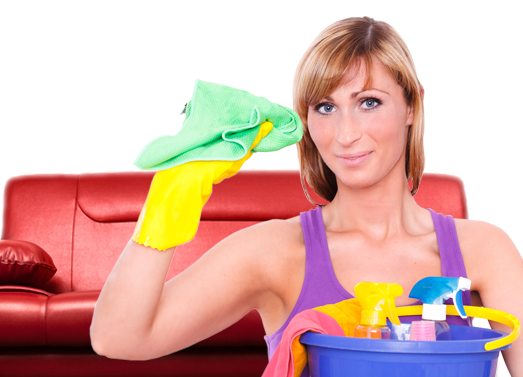Top Tips for Maintaining a Mold-Free Bathroom Haven
Posted on 15/06/2025
Top Tips for Maintaining a Mold-Free Bathroom Haven
Is your bathroom prone to mold and mildew? The humid and often warm conditions make bathrooms a prime breeding ground for mold. Not only is bathroom mold unsightly, but it can also be hazardous to your health and damaging to your home. Maintaining a mold-free bathroom is crucial for both your well-being and the value of your property. In this comprehensive guide, you'll discover expert strategies, clever cleaning hacks, and practical daily habits to keep your bathroom sparkling and free from mold for good.

Why Is Mold a Problem in Bathrooms?
Bathrooms combine the three ingredients mold loves most: moisture, warmth, and organic material. After showers, baths, and even hand-washing, condensation builds up, creating a damp environment. Mold spores float invisibly in the air and, when they land on wet surfaces (like tile grout, ceilings, or shower curtains), they can quickly flourish.
- Health risks: Mold can cause allergies, asthma, respiratory issues, and worsen symptoms for those with sensitivities.
- Structural damage: Over time, mold can lead to rot in wooden framing, drywall, and even ceilings if left unchecked.
- Unpleasant odors and stains: Black spots, slimy patches, and a musty smell can make your bathroom an uncomfortable space.
Eliminating mold once it takes hold can be difficult and expensive. Prevention is far easier than restoration! Here's how to create and maintain a mold-resistant bathroom haven with these actionable tips.
Best Tips for Keeping Your Bathroom Mold-Free
1. Maximize Ventilation and Airflow
The number one defense against mold in bathrooms is reducing moisture. Proper ventilation removes humid air and helps surfaces dry faster.
- Use an exhaust fan: Switch it on before every shower and leave it running for at least 15-20 minutes after each use.
- Open windows: If you have a bathroom window, open it to let steam escape and fresh air in.
- Install a vented door: Consider swapping to a door with a ventilation panel to improve airflow if your bathroom is prone to stuffiness.
Pro Tip: If you don't have an exhaust fan, consider installing one. For now, keep the bathroom door open after bathing to facilitate air circulation.
2. Wipe Down Wet Surfaces Regularly
Mold needs moisture to thrive. After every shower or bath, take a minute to wipe down tiles, shower doors, taps, and other wet surfaces with a squeegee or absorbent towel. Pay special attention to:
- Grout lines
- The bottom edge of the shower door
- Window sills
Forming this habit will greatly reduce the buildup of excess moisture and discourage mold growth.
3. Eliminate Clutter That Can Hold Moisture
It's easy for shampoos, lotions, and beauty products to accumulate on shelves and ledges, but:
- They trap water between them and the surface.
- They reduce airflow to nooks and crannies.
Maintain a minimalist approach in your shower and bathroom. Only keep essential products in the open. Store extras in a cabinet or a dry area to help keep all surfaces easy to clean and mold-free.
4. Frequently Wash and Dry Towels, Mats, and Curtains
Textiles absorb moisture quickly and, if not dried thoroughly, are a magnet for mold spores. To avoid issues:
- Hang towels neatly and spread out after each use.
- Wash bath mats weekly and keep them off the floor when not in use.
- Use a mildew-resistant shower curtain or liner, and wash it monthly to prevent buildup.
5. Choose Mold-Resistant Materials
When renovating or updating your bathroom, opt for materials that naturally resist mold, such as:
- Ceramic or porcelain tiles
- Mold-resistant paint for walls and ceilings
- Glass shower doors (easier to dry than curtains)
- Sealants specifically designed for wet areas
Mold-resistant products reduce your long-term cleaning and maintenance workload.
6. Address Leaks and Plumbing Issues Immediately
A drip beneath the sink, a loose faucet, or a hidden shower leak can result in chronic dampness--a perfect recipe for mold. If you notice:
- Continuous puddling under or around fixtures
- Peeling paint or warped surfaces
- Visible staining on walls or ceilings
Act fast! Fix leaky plumbing and water damage promptly. Waiting will allow moisture to seep into materials, leading to costly repairs later.
7. Regularly Clean with Mold-Fighting Solutions
Routine cleaning is essential for a mold-free bathroom sanctuary. Use these homemade and store-bought solutions:
-
Vinegar solution:
- Mix equal parts white vinegar and water, spray onto surfaces, let sit for 10 minutes, then wipe.
- Perfect for grout, tiles, and even shower curtains.
-
Baking soda paste:
- Mix baking soda with a small amount of water to create a gentle scrub for tiles and sinks.
-
Hydrogen peroxide:
- Use 3% hydrogen peroxide as a spray disinfectant for moldy areas. (Be careful with colored grout, as it may bleach it.)
-
Commercial anti-mold bathroom cleaners:
- If natural remedies don't cut it, look for cleaners labeled "mold remover" or "anti-fungal."
Tip: Always wear gloves and ventilate the room while cleaning mold-prone areas.
8. Keep Humidity Levels Below 50%
Ideal humidity for bathrooms: 30-50%. Excess humidity means more condensation after each shower.
- Use a digital hygrometer to monitor indoor humidity.
- Install a compact bathroom dehumidifier if your home has persistent moisture problems.
- On humid days, consider running the air conditioner or a portable fan after showers.
9. Treat and Prevent Grout Mold
Grout joints are the number one spot for bathroom mold because they're porous and can absorb water. To protect your grout:
- Scrub grout lines with a firm brush and soapy water weekly.
- Spray grout regularly with a vinegar solution.
- Apply a grout sealer every year or as recommended.
10. Maintain Drains and Shower Traps
Slow or clogged drains lead to puddles and standing water, which raise the risk of bathroom mold and mildew.
- Regularly remove hair and debris from drains.
- Flush drains with hot water, baking soda, and vinegar monthly.
- Call a plumber for persistent blockages.
11. Let the Light In
? Natural sunlight is a powerful mildew deterrent. If your bathroom has windows, open blinds or curtains during the day to expose surfaces to sunlight. Mold struggles to grow in well-lit spaces.
Bathroom Maintenance Checklist for Mold Prevention
- Daily: Use exhaust fans, open windows, and wipe down wet surfaces.
- Weekly: Launder towels and bath mats, clean shower and sink areas, and inspect for leaks.
- Monthly: Wash shower curtains, check grout and caulk seals, and monitor humidity levels.
- Seasonally: Deep clean tile, re-caulk seams as needed, and inspect behind/under bathroom fixtures for dampness.
Eco-Friendly Bathroom Mold Solutions
For those who prefer a green approach to mold prevention, here are eco-friendly solutions:
- Essential oil sprays: Tea tree oil, eucalyptus oil, and lavender have natural anti-fungal properties. Mix a few drops with water and spritz surfaces.
- Ventilation plants: Plants like Boston fern and peace lily may help absorb excess moisture (but make sure soil doesn't stay soggy, as it can encourage mold).
- Natural stone instead of wood: For shelving or benches, opt for nonporous materials that won't hold on to moisture.
What to Do If You Find Mold in Your Bathroom
If you notice a small patch of mold (less than 10 square feet), it's generally safe to clean yourself. Wear gloves, goggles, and a face mask to avoid inhaling spores. Clean the area thoroughly with the recommended solutions above. For:
- Large infestations
- Mold in HVAC vents or under floors
- Mold in drywall or behind wallpaper
Contact a certified mold remediation expert. Mold can cause serious health concerns, and improper removal can make things worse.

Frequently Asked Questions: Mold-Free Bathroom Tips
What is the best way to prevent mold in bathrooms naturally?
Consistent ventilation is key. Use fans or open windows during and after showers, wipe down surfaces, and clean regularly with vinegar or baking soda solutions.
Can mold survive on plastic or tile?
While mold doesn't feed on non-porous surfaces like plastic or glazed tile, it can still grow on soap scum, skin cells, and minerals that build up. That's why cleaning regularly is essential.
Is bleach the best for killing bathroom mold?
Bleach can kill surface mold, but it may not penetrate porous materials (like grout or drywall). Vinegar, hydrogen peroxide, and specially formulated bathroom mold removers are often more effective for deep cleaning.
Conclusion: Achieve a Truly Mold-Free Bathroom Sanctuary
Maintaining a mold-free bathroom haven might seem daunting, but by following these top tips, you'll nurture a cleaner, fresher, and healthier space for your family to enjoy. Prevention, regular cleaning, and quick action are your best allies in the fight against bathroom mold and mildew.
- Monitor moisture and humidity vigilantly.
- Ventilate, wipe, and clean routinely.
- Choose mold-resistant materials for lasting results.
With a little attention and the right strategies, your bathroom will be a retreat you'll love--mold-free and truly relaxing.




